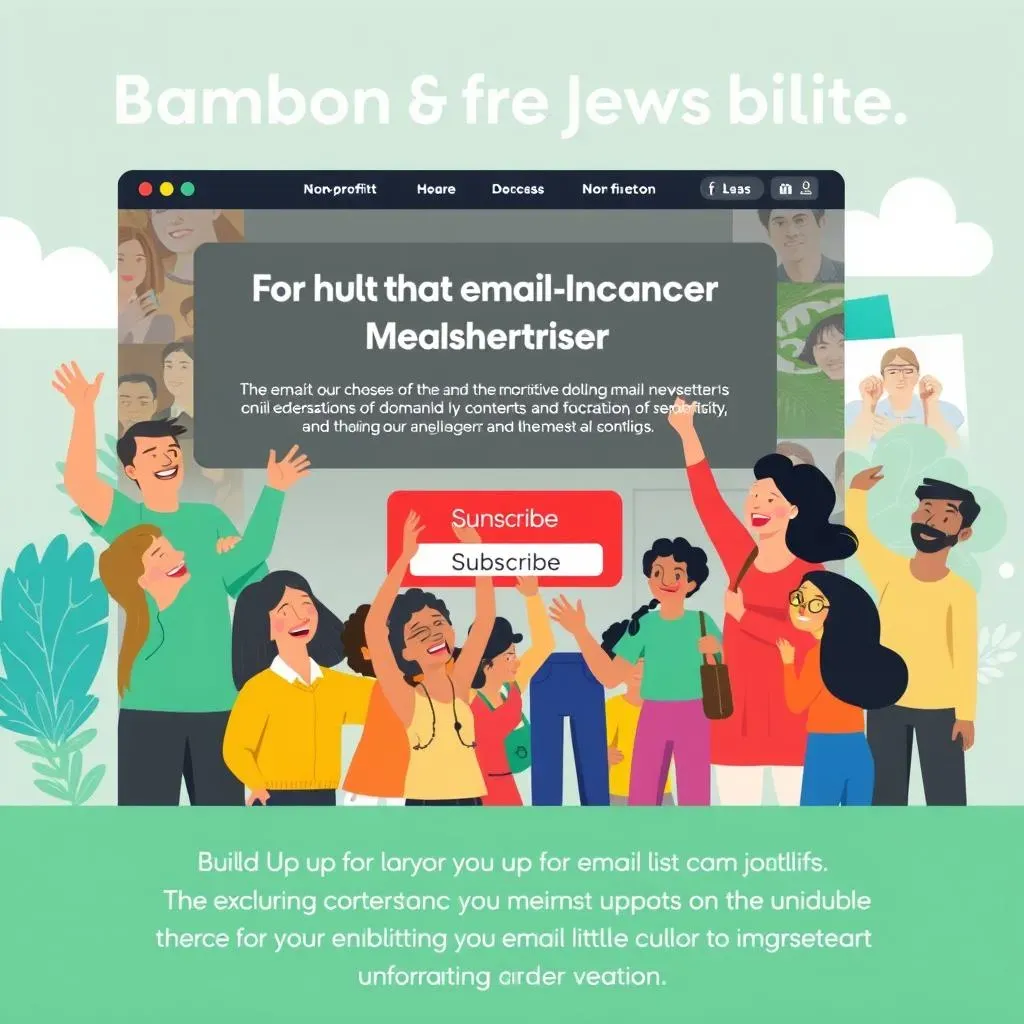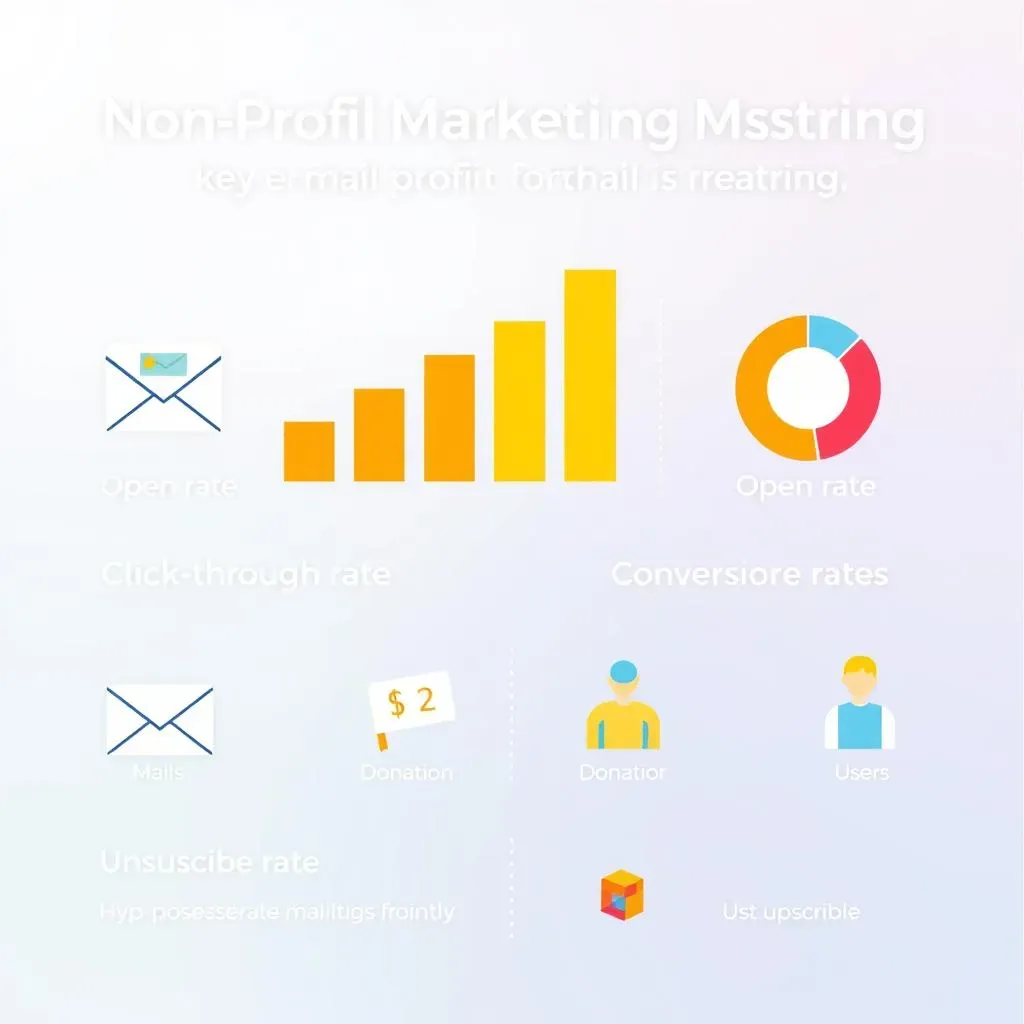Table of Contents
In today's digital age, effective communication is key to a successful non-profit. Email marketing for non-profit fundraising offers a powerful, cost-effective way to connect with donors, volunteers, and supporters. This comprehensive guide will equip you with the strategies and tools you need to build a thriving fundraising program through email. We'll explore how to cultivate a robust email list, craft compelling messages that resonate with your audience, and track your results to maximize your impact. Learn how to transform your email marketing from a simple communication tool into a dynamic fundraising engine. We'll cover essential steps, from strategically growing your email list to designing impactful email campaigns that drive donations and foster lasting relationships with your community. This isn't just about sending emails; it's about building connections and inspiring action. Prepare to discover how email marketing for non-profit fundraising can transform your organization's ability to achieve its mission. By the end of this article, you'll have a clear roadmap to implement effective email strategies, analyze your results, and ultimately raise more funds to support your cause.
Building Your Email List for NonProfit Fundraising

Building Your Email List for NonProfit Fundraising
Strategic List Building: Attracting the Right Donors
Building a strong email list isn't about sheer numbers; it's about quality. You want engaged individuals who genuinely care about your cause. Think of your email list as a garden—you wouldn't plant just any seeds, would you? You'd choose the ones most likely to thrive and blossom. Similarly, focus on attracting donors who are passionate about your mission and likely to support your fundraising efforts. Offer valuable content, such as informative guides or exclusive updates, to incentivize sign-ups. Make sure your signup forms are easy to find and simple to complete. Avoid lengthy forms that deter potential subscribers. Remember, a smaller, highly engaged list is far more valuable than a huge list of inactive contacts. To learn more about crafting engaging content, check out our guide on effective storytelling.
Consider offering incentives to join your email list, such as a free e-book, a discount on merchandise, or an invitation to an exclusive webinar. People are more likely to give you their email address if they feel they're getting something in return. Think about what would be valuable to your target audience and tailor your offer accordingly. Another great way to grow your list is by leveraging your existing network. Encourage current donors and volunteers to share your signup link with their friends and family. Word-of-mouth referrals are incredibly powerful and can lead to a significant increase in subscribers. Don't forget the power of social media! Promote your email signup on all your social media platforms and include a clear call to action. Remember, consistency is key. Regularly promote your email list across all channels to keep it top-of-mind.
Method | Pros | Cons |
|---|---|---|
Incentivized Sign-ups | High engagement, increased conversions | Requires resource investment for incentives |
Social Media Promotion | Wide reach, cost-effective | Requires consistent effort, organic reach limitations |
Referral Programs | High trust factor, organic growth | Requires incentivization, relies on existing network |
Multiple Channels, Maximum Impact: Diversifying Your Outreach
Don't rely solely on your website for email sign-ups. Think outside the box! Integrate signup forms into event registrations, donation pages, and even your social media profiles. This multi-pronged approach significantly increases your chances of capturing email addresses. Make it easy for people to sign up at every opportunity. Include prominent signup buttons on your website, social media pages, and even in your email signatures. This consistent presence reminds people to join your list and keeps your organization top-of-mind. Consider using pop-up forms on your website, but be mindful of not being too intrusive. A well-placed, non-intrusive pop-up can be effective without frustrating visitors. For more ideas on how to engage donors, check out our article on engaging donors.
Partnering with other organizations is a fantastic way to expand your reach. Collaborate with like-minded non-profits or businesses to cross-promote each other's email lists. This mutually beneficial arrangement introduces your organization to a new audience and expands your potential donor base. Remember to always obtain explicit permission before adding anyone to your email list. This is crucial for maintaining ethical practices and adhering to data privacy regulations. Always make sure your signup forms are clear and transparent about how you will use the email addresses collected. People are more likely to join your list if they trust you with their information. Consider offering a way for people to update their preferences or unsubscribe from your list easily and quickly.
- Website signup forms
- Event registration forms
- Social media signup buttons
- Pop-up forms (used strategically)
- Partnerships with other organizations
Crafting Compelling Emails for NonProfit Fundraising

Crafting Compelling Emails for NonProfit Fundraising
Storytelling: The Heart of Your Message
Forget dry fundraising appeals! Inject your emails with compelling stories. Think about the real people your non-profit helps. Share their triumphs, struggles, and the impact your work has had on their lives. A powerful narrative creates an emotional connection with your readers, making them more likely to donate. Use vivid language and descriptive details to paint a picture in their minds. Show, don't just tell! For example, instead of saying "We help families in need," describe a specific family whose life was transformed by your organization's support. Include a photo if possible. Remember, emotions drive donations. Check out our post on effective storytelling for nonprofits for more tips.
Keep your stories concise and focused. Avoid overwhelming your readers with too much information. Get straight to the point and highlight the key moments that will resonate with your audience. Use strong calls to action that clearly tell your readers what you want them to do. Make it easy for them to donate by providing clear instructions and links. Consider A/B testing different calls to action to see which one performs best. Personalization is key! Address your readers by name whenever possible. Segment your email list based on donor history, interests, or giving levels, and tailor your messaging accordingly. This makes your emails feel more personal and increases the likelihood of engagement.
- Focus on a single, compelling story per email.
- Use vivid language and descriptive details.
- Include strong calls to action.
- Personalize your message whenever possible.
Design Matters: Creating Visually Appealing Emails
Your email's design is just as important as its content. A visually appealing email is more likely to be opened and read. Use high-quality images and videos that showcase your work and the people you serve. Keep your layout clean and uncluttered. Avoid overwhelming your readers with too much text or too many images. Use a consistent brand identity throughout your emails. This includes your logo, color scheme, and fonts. Make sure your emails are mobile-friendly. More people open emails on their phones than on their computers, so your emails need to look good on any device. For more fundraising ideas, check out our guide on seasonal fundraising ideas.
Use a clear and concise subject line that grabs your reader's attention. Make it clear what the email is about and why they should open it. Use a strong call to action in your email that tells your readers exactly what you want them to do. Make it easy for them to donate by providing a clear and prominent button. Test different subject lines and calls to action to see what works best. A/B testing is a great way to optimize your email campaigns over time. Remember, first impressions matter. Your email's design should reflect the professionalism and trustworthiness of your organization. Make sure your emails are easy to read and navigate, even on smaller screens. Use clear headings, bullet points, and plenty of white space to make your email easy to scan.
Element | Best Practices |
|---|---|
Subject Line | Short, compelling, clear |
Images | High-quality, relevant, mobile-friendly |
Layout | Clean, uncluttered, consistent branding |
Call to Action | Clear, prominent, easy to find |
Personalization and Segmentation: Reaching the Right People
Generic emails are a turn-off. Personalize your emails to create a more meaningful connection with your audience. Use your donors' names, and segment your email list based on their interests and giving history. This targeted approach ensures that your message resonates with each recipient. For example, you might send a different email to first-time donors than you would to long-term supporters. You can also segment your list based on age, location, or other relevant factors. This allows you to tailor your messaging to specific groups and increase your chances of securing donations. Learn more about donor retention strategies in our article on retaining donors.
Use email marketing software to automate your email campaigns. This saves you time and ensures that your emails are sent consistently and efficiently. Many email marketing platforms offer features that allow you to personalize emails based on recipient data. This includes automatically inserting donor names, customizing the content based on their giving history, and even tailoring the call to action based on their past behavior. Use data to your advantage! Track your email metrics, such as open rates, click-through rates, and conversion rates, to see what's working and what's not. Use this information to refine your email campaigns over time and improve your fundraising results. Remember, email marketing is an ongoing process. Regularly review and update your strategies to ensure they are effective and aligned with your fundraising goals.
Measuring Success: Analyzing Your Email Marketing for NonProfit Fundraising Campaigns

Measuring Success: Analyzing Your Email Marketing for NonProfit Fundraising Campaigns
Key Metrics: Tracking Your Progress
So, you've launched your email campaign. Now what? Don't just sit back and hope for the best! Tracking key metrics is crucial to understanding what's working and what's not. Think of it like this: you wouldn't bake a cake without checking if it's done, would you? Similarly, you need to monitor your email campaign's performance to ensure it's achieving your fundraising goals. Start by tracking your open rates. This tells you how many people even bothered to open your email. A low open rate might suggest a problem with your subject line or sender name. Next, look at your click-through rates—how many people clicked on the links in your email? Low click-through rates could mean your email content isn't compelling enough or your call to action isn't clear. For more on crafting compelling content, check out our guide on effective storytelling in non-profit fundraising.
Then there's the conversion rate – the percentage of people who actually donated after clicking a link. This is the ultimate measure of your campaign's success. A low conversion rate might indicate issues with your donation page or the overall flow of your email. Finally, pay attention to your unsubscribe rate. A high unsubscribe rate might signal that your emails are irrelevant or annoying to your recipients. Regularly analyzing these metrics allows you to identify areas for improvement and refine your strategies for future campaigns. Remember, data is your friend! Use it to learn, adapt, and ultimately improve your fundraising efforts. To learn more about overcoming common fundraising challenges, read our article on non-profit fundraising challenges and solutions.
Metric | What it measures | What low numbers might indicate |
|---|---|---|
Open Rate | Percentage of emails opened | Poor subject line, sender reputation issues |
Click-Through Rate | Percentage of emails with link clicks | Unengaging content, unclear call to action |
Conversion Rate | Percentage of clicks resulting in donations | Problems with donation page, email flow |
Unsubscribe Rate | Percentage of unsubscribes | Irrelevant content, excessive emails |
Analyzing the Data: Actionable Insights
So you've collected all this data – now what? Don't let it gather dust! The real power lies in analyzing the data and using it to improve your future campaigns. Think of it like a treasure map leading you to fundraising gold! Start by comparing your results to previous campaigns. Have your open rates improved? Has your conversion rate increased? Identifying trends helps you understand what’s working and what needs tweaking. Next, segment your data. Look at the performance of different segments of your email list. Did certain groups respond better to specific types of emails? This helps you personalize your messaging even further and target your efforts effectively. For instance, you might discover that younger donors respond better to shorter, more visually driven emails, while older donors prefer longer, more detailed narratives. For more successful fundraising stories, check out our page on non-profit fundraising success stories.
Don't be afraid to experiment! Try A/B testing different subject lines, calls to action, and email designs. This helps you determine what resonates most effectively with your audience. Analyze the data from your A/B tests to see which version performed better. Use this information to inform your future email campaigns. Remember, email marketing is an iterative process. You'll constantly be learning and improving your approach based on the data you collect. Regularly review your email marketing strategy. Are your goals still relevant? Is your messaging still on point? Make adjustments as needed to keep your campaigns fresh and effective. For insights on current trends, check out our article on non-profit fundraising trends.
- Compare results to previous campaigns
- Segment data by donor demographics and behavior
- A/B test different subject lines, calls to action, and designs
- Regularly review and update your email marketing strategy
